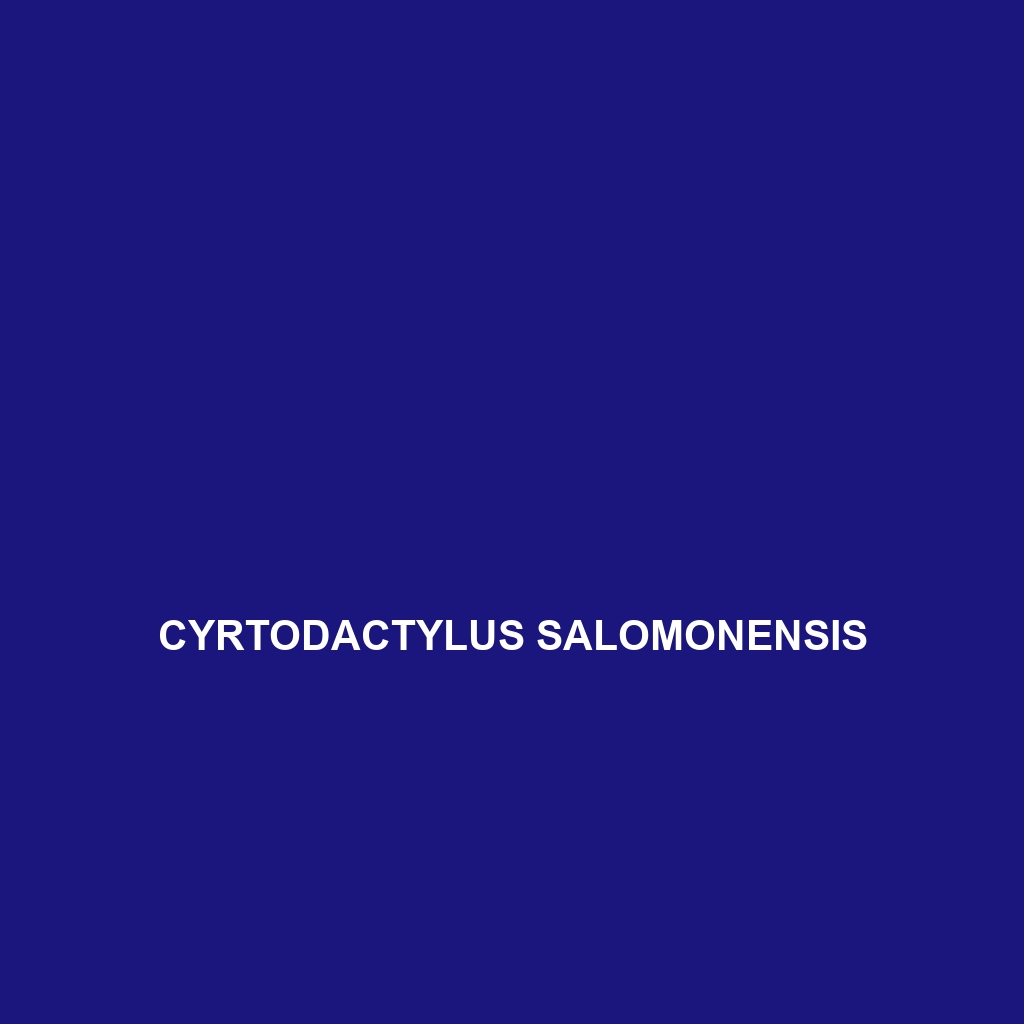Cyrtodactylus salomonensis: A Comprehensive Overview
Common Name: Cyrtodactylus salomonensis
Scientific Name: Cyrtodactylus salomonensis
Habitat
Cyrtodactylus salomonensis, commonly known as the Solomon Islands bent-toed gecko, is primarily found in the lush, tropical rainforests of the Solomon Islands. Their habitat includes moist lowland forests, which provide the necessary humidity and cover from predators. These geckos are often located near streams and rivers, as they thrive in environments with abundant vegetation and diverse microhabitats.
Physical Characteristics
Cyrtodactylus salomonensis typically reaches a length of about 10 to 15 cm. The coloration varies, but they are generally characterized by a light brown or tan body adorned with dark brown or reddish-brown markings. Their unique physical features include large, bulging eyes, which enhance their nocturnal foraging capabilities, and distinctive, small, finger-like projections known as lamellae on their toes, allowing them to climb effectively on smooth surfaces.
Behavior
This species is predominantly nocturnal, exhibiting crepuscular activity patterns—most active during twilight hours. Cyrtodactylus salomonensis is known for its agile movement, often darting between foliage in search of prey. They display territorial behaviors and are often found basking during the early evening hours on tree trunks or rocks, where they are more visible to potential mates or rivals.
Diet
Cyrtodactylus salomonensis primarily feeds on insects and other arthropods, effectively controlling local insect populations. Their diet consists of crickets, moths, and various beetles, making them important predators within their ecosystem. The feeding habits of Cyrtodactylus salomonensis showcase their role as both predator and prey, contributing to the ecological balance of their habitat.
Reproduction
The breeding season for Cyrtodactylus salomonensis typically occurs during the warm, wet months of the year, which is advantageous for the survival of their offspring. Females lay one to two eggs per clutch, usually in protected crevices or leaf litter. The eggs undergo a difficult incubation period of approximately 60 to 75 days, after which hatchlings emerge fully formed and ready to fend for themselves in the wild.
Conservation Status
Cyrtodactylus salomonensis is currently classified as “vulnerable” due to habitat loss from deforestation and human encroachment. Efforts are underway to monitor their populations and protect their natural habitats from further degradation. Conservationists emphasize the need for habitat preservation to ensure this species’ continued survival in the wild.
Interesting Facts
One fascinating aspect of Cyrtodactylus salomonensis is its unique defensive behavior. When threatened, they can drop their tails, distracting predators while they escape. This autotomy is common among geckos and plays a significant role in their survival strategy. Additionally, the vibrant coloration of their skin helps them blend into the forest undergrowth, making them less visible to potential threats.
Role in Ecosystem
Cyrtodactylus salomonensis plays a crucial role in its ecosystem as both a predator and prey. By controlling insect populations, they help maintain ecological balance. Additionally, their presence indicates a healthy environment, as they are sensitive to habitat changes. Protecting Cyrtodactylus salomonensis supports biodiversity and helps maintain the health of tropical ecosystems in the Solomon Islands.
This format includes well-structured sections emphasizing key information about Cyrtodactylus salomonensis, enhancing its visibility and readability for search engines and readers alike.
